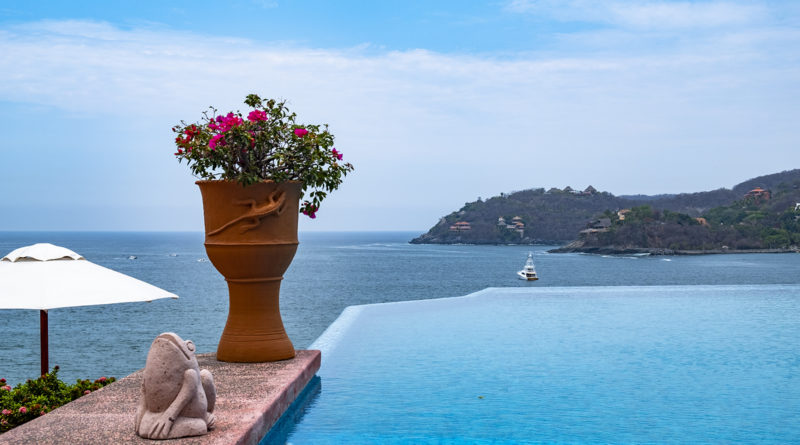Mexico’s Most Visited Destinations
The infinity pool is the best seat in the house. Photos: Benjamin Myers
Zihuatanejo, The Town That Sings
By Marlise Kast-Myers www.marlisekast.com |Photos: Benjamin Myers
As avid travelers, my husband, Benjamin and I have navigated the better part of Mexico — in our youth as strapped backpackers, and in our marriage as “it’s totally worth the splurge” adventurers.
When Benjamin suggested we visit Zihuatanejo, the only reference I had was the paradise beach where freed prisoners, Andy and Red, reunited in the film “The Shawshank Redemption.” Unlike the 90’s American drama, this resort town northwest of Acapulco isn’t just an isolated strand with two people and a boat.
In fact, it’s much better.
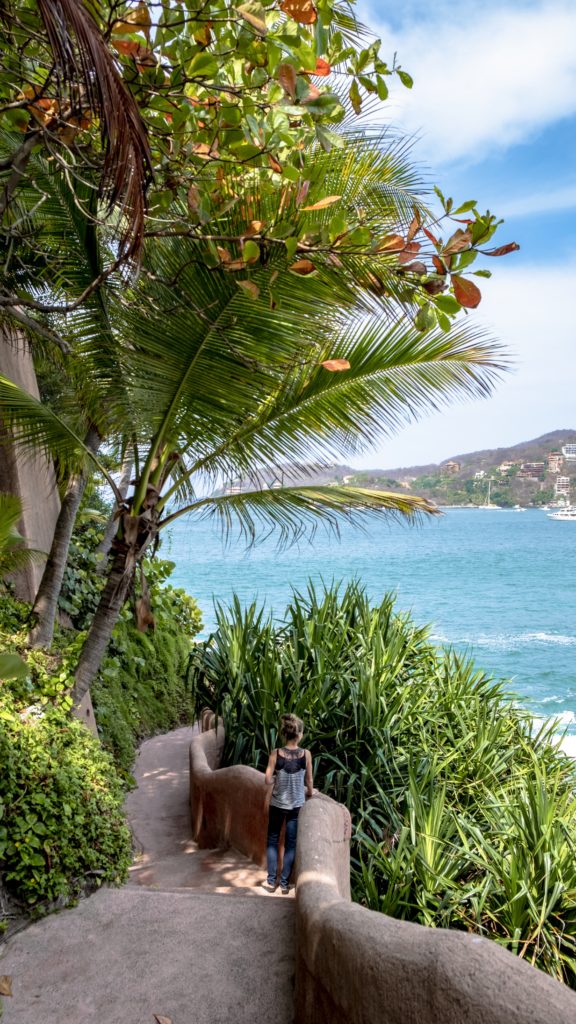
Palm-fringed beaches and a fishing pier set the stage for this authentic Mexican town cradled in the Bay of Zihuatanejo. Backed by the Sierra Madre del Sur Mountains, its Pacific waters lure sun-kissed anglers casting for billfish, tuna, marlin, and sailfish. Between shopping, golfing, parasailing, surfing, diving, and paddleboarding, it’s no wonder Zihuatanejo is ranked among Mexico’s most visited destinations.
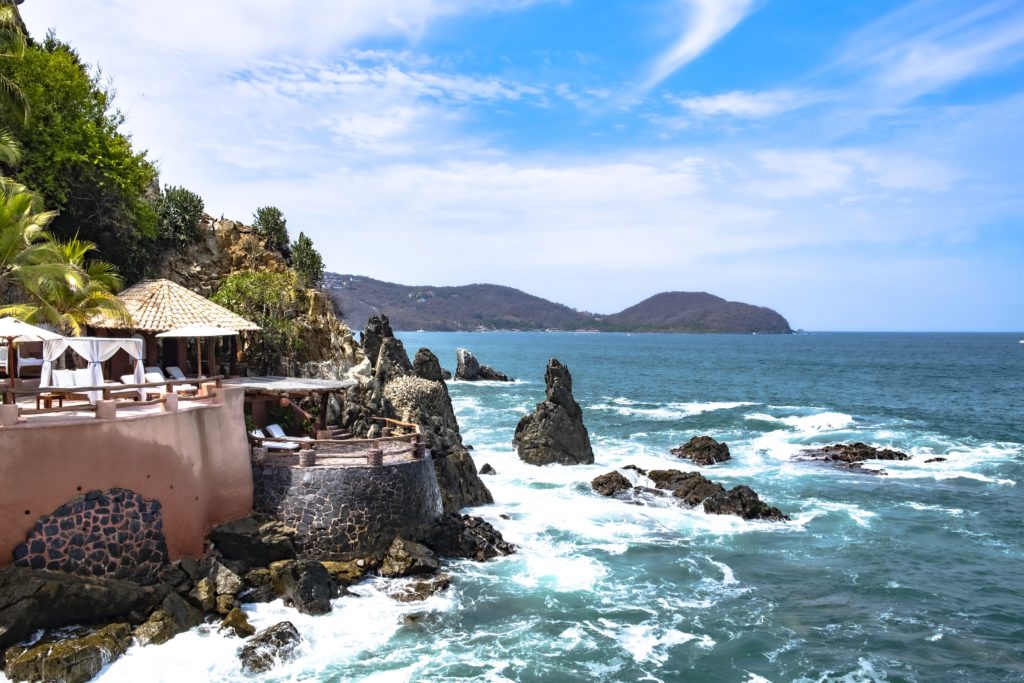
Some might argue that the government’s plan to develop Zihuatanejo in the 70’s was like turning coconut water into Coca-Cola. Having never experienced it “then” and falling madly in love with it “now,” we consider it more of a refreshing agua fresca.
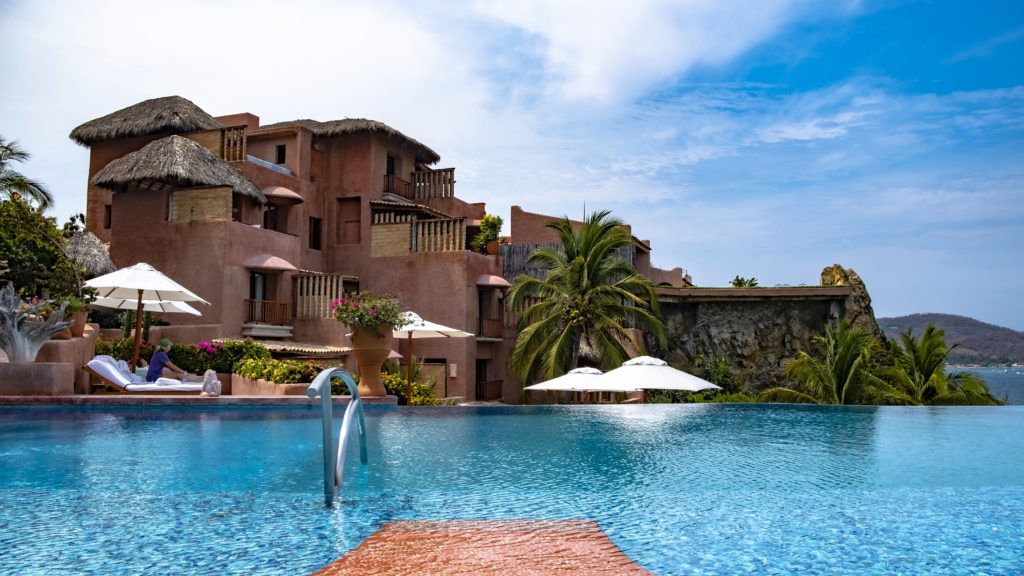
But on Day One, fatigue was at an all-time high. We had arrived at the Ixtapa-Zihuatanejo International Airport on a red-eye from Tijuana with Volaris ($400). Two previous flights to Mexico had sold us on Cross Border Xpress (CBX) — the enclosed pedestrian bridge that connects passengers from the terminal building in San Diego to the Tijuana International Airport.

By 8:30 a.m., we were in a taxi on our way to La Casa Que Canta (The House that Sings), a luxury boutique hotel located 20 minutes from the airport. There’s no shortage of lodging in Zihuatanejo, but for those wanting to go straight to the top, “The House that Sings” is where you’ll find perfect harmony. It greets you with a hum that subtlety transforms into the philharmonic orchestra by day three.
Guests are welcomed with hibiscus-flower water in an open-air lobby where Pernambuco-wood pillars support a palapa roof. This spot marks the first of many breathtaking vistas, each more Instagram-worthy than the last.
Perched above sprawling La Ropa Beach, La Casa Que Canta is like stepping into the Continuous Staircase by artist, M.C. Escher. Dozens of winding

staircases lead to unexpected surprises around each turn — from an underground grotto spa, to a saltwater pool that blends with the ocean. Tucked behind sand-colored walls are 25 suites and two residence villas (family friendly), each thoughtfully decorated with works curated by Owner, Jacques Baldessari.
In these gallery-like suites, class-meets-culture with wildlife sculptures, natural materials, folk art, custom headboards, and masterpieces commissioned by Oaxaca and Michoacán craftsmen. Strewn across thick-white duvets are daily greetings spelled with flower petals and greenery. Showers are laid in river stones, soaps are handmade with cocoa, and hangers are wrapped in reeds.
The landscape alone is mesmerizing, with raked sands, braided trees, and a mingling of cacti and bougainvillea — openly proclaiming to gardeners everywhere that sharp spines and soft petals can, in fact, get along.
Within this heavenly compound, nature conquers man, to the point you just want to throw your phone into the ocean and unclench everything that beeps, buzzes, flashes, and rings. Here, water is music and silence is sound. Fountains, waterfalls, pools, and crashing waves hit perfect pitch. Together they overpower traditional creature comforts that La Casa Que Canta vows to avoid, including TVs, alarm clocks, and even cables and cords (they conceal them well).
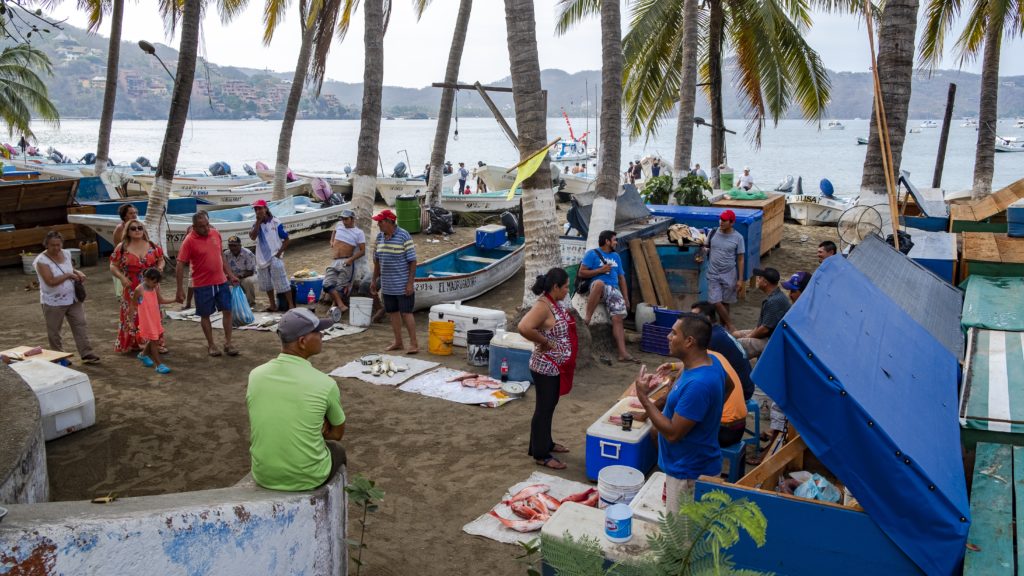
In their place are books and reading nooks where travelers can select from in-room libraries and fade into calm. It’s almost impossible not to unwind here. Each 1,200-square-foot suite comes with a plunge pool, living room, and spacious terrace with ocean view.
For nearly three decades, this property has been serving elite romantics, including outside guests who come for candlelit
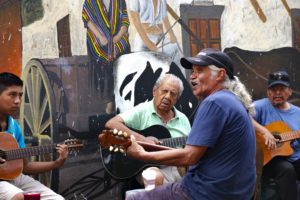
dinners at Mar y Cielo. Chiseled into the cliff, this terrace restaurant prepares everything from scratch, including creamy rich ravioli and buttery breakfast croissants. Salsa is prepared tableside, portions are spot-on, and lunch entrées are surprisingly reasonable at $8–$10. Above all, the daily catch is divine, especially the whole fish baked in ginger and soy.
Between massages at their Spa by Clarins, and afternoon naps by the pool, it was remarkably challenging to venture outside the property. But we did, starting with a walk to El Centro. Just 10 minutes from La Casa Que Canta, this downtown area on the north end of the bay can be reached by the tree-lined malecón (boardwalk).

This is where Mexican culture awakens the foreigner, with locals selling street tacos, wrapped tamales, and roasted corn.


There’s cotton candy, shaved ice, and sugary churros to satisfy every sweet tooth. Narrow alleys draped in colored flags converge like a web at the main plaza. The center of all things fiesta, the plaza brings residents together, all 140,000 of them — children, parents, grandparents, and more Chihuahuas than we could count.
Along this pedestrian zone are the archaeological museum, the Catholic church, and the town’s oldest building — Restaurant Coconuts — restored from a 150-year-old coconut plantation. Between the Municipal Beach and the pier is a smattering of shops selling

silver, hammocks, hats, seashells, ceramics, and other crafts. The area was buzzing with activity, especially at Paseo Del Pescador (Fisherman’s Promenade) where the daily catch was on display.
On our way back to the hotel, we stumbled across a vegetarian market, small and sweet, held every Saturday morning. It was here where we met American expats who, like us, tested the waters of Zihuatanejo. The only difference is, they never left.
Understandably so.
By day three, we were so at peace in Zihuatanejo, that for a brief second, we wondered what it might take to retire there. Maybe it was the morning paddle across the silky bay that hooked us, or the sunset cruise to Ixtapa, but whatever it was, we left Zihuatanejo with the sound of crashing waves crescendo-ing in our minds.
For more info, visit www.lacasaquecanta.com.

